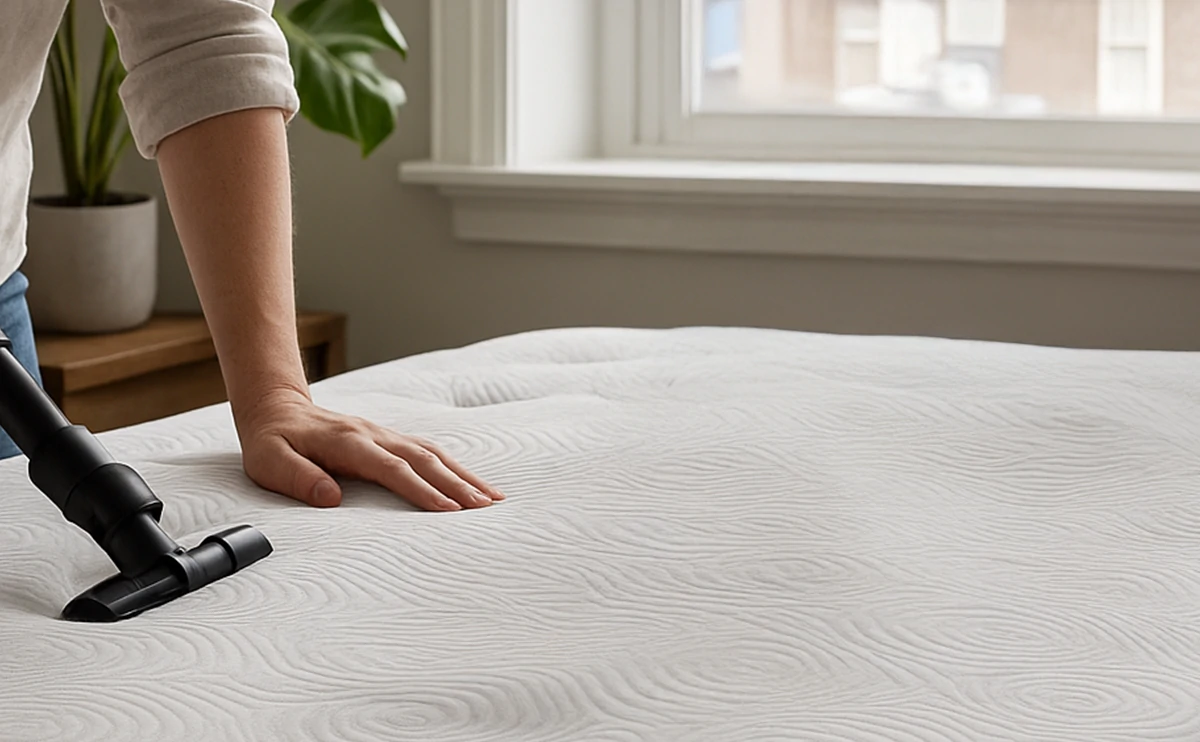How to clean a mattress in 5 simple steps

A mattress is usually one of the most expensive items in a new home, so you want to make sure it will last as long as possible – and that means learning how to clean and care for a mattress properly. Dust mites, dirt, sweat, dead skin, and other debris will inevitably get into your mattress over time, even if you use a mattress protector, so it's a good idea to clean your mattress regularly to extend the life of your bed — especially if you suffer from allergies or also have pets. Additionally, cleaning your mattress is an important part of maintaining a healthy sleep environment.
The good news is that cleaning a mattress is not as complicated as you think. Discover the five simple steps below that will help you keep your mattress clean and ready for years of a good night's sleep.
Disinfect and clean your mattress
1-Gather mattress cleaning supplies and tools
To deep clean your mattress, you will need some household items to help you with this.
- Enzymatic detergent or dish soap
- Vacuum cleaner with upholstery attachment
- baking soda
- Clean white clothes
- Cold water
- Remove the bedding
2. Remove all sheets, pillowcases and mattress covers
Wash according to care instructions. Washing bedding in hot water will help get rid of dust mites but please heed the washing instructions as some materials may be more sensitive. Depending on the type of pillows, you may be able to wash them as well. For more information on pillow care, please read here.
3. Vacuum the mattress
Use a vacuum cleaner with a low suction upholstery attachment to thoroughly clean the entire surface of the mattress. Pay special attention to seams, edges and crevices where dust, dirt and allergens may accumulate.
4. Spot cleaning:
If there are any visible stains such as blood or sweat on the mattress, clean them. Avoid using excess water, as mattresses can take a long time to dry, and too much water can damage some construction materials. Proceed with caution especially if you are using the tools for cleaning for the first time and test the cleaning solution in an inconspicuous area first.
Spray the enzyme cleaner onto a clean cloth and wipe the stained area with the cloth. Next, put some cold water on a different clean cloth and continue gently blotting until the stain is gone. Take note of using as little product and moisture as possible. Alternatively, you can make your own stain removal solution by mixing dish soap with water. After foaming, use a cloth to pick up the foam and apply it to the stain. Avoid using a harsh brush to scrub the fabric.
5. Remove unpleasant odors from the mattress
To get rid of unpleasant odors, sprinkle baking soda over the entire surface of the mattress. Leave the baking soda on for at least 15 minutes, or longer if possible. The baking soda will break down the acid and absorb any remaining moisture or odor. After allowing the baking soda to remain, vacuum the mattress again to remove the baking soda and any lingering odors. You can also prop the mattress in a well-ventilated area to allow air circulation. Fresh air can help remove any lingering odors
How often to clean your mattress?
Now that you've learned how to clean your mattress, it's time to protect it. Once the mattress is completely dry, cover the new mattress with a mattress protector. This will make cleaning easier in the future and protect your bed from spills and dirt. Make it a habit to vacuum your mattress at least twice a year and spot clean it regularly to keep it in good condition.
Check the mattress manufacturer's cleaning instructions
Remember to check your mattress manufacturer's instructions regarding cleaning, as some mattresses may have specific care instructions that must be followed. Always be careful with the amount of moisture you use, as excess moisture can lead to mold and mildew growth.

